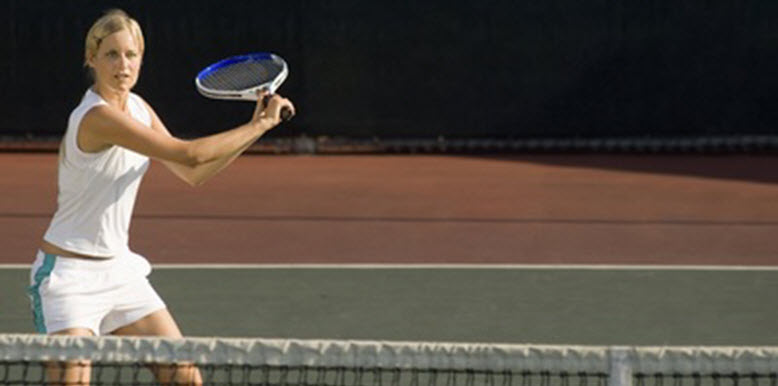Newport Beach Orthopedic Institute is proud to provide certified athletic trainers to help support the USTA’s Newport Beach Bowl ITF being held March 11 – 19th for the Boys’ & Girls’ Singles & Doubles Division.
Event Information:
The Tennis Club at Newport Beach
1602 E. Coast Highway
Newport Beach, CA. 92660
Map
For more event details visit the USTA website
In the spirit of helping to avoid sports-related injuries specific to tennis, we thought it was a good time to sit down with Dr. Shaunak S. Desai, a board-certified Orthopedic Surgeon at Newport Orthopedic Institute who specializes in sports injuries to get his take on how to prevent getting tennis elbow.
Tennis elbow is a painful sensation to the outer side of the elbow commonly arising due to repetitive and frequent use of the arm resulting in inflammation or injury of the muscles or tendons around your elbow area.
It is called tennis elbow since it is quite common for tennis players to develop these symptoms. However, other sports such as golf or even non-sports related activity such as construction or other activities that require over-use and repetitive functions involving the arm can suffer from this painful condition.
Here are Dr. Desai's Top 9 Ways to Help Prevent Tennis Elbow:
1. Avoid Repetitive Tasks
If you are active in a particular sport that involves high impact and/or hitting movements involving your arm – consider adding a cross-training regimen to offset these activities. If you haven’t played for a while, make sure you start out slow to ease back into play. It may take a number of weeks to build your strength back up and return to the proper form and technique you once had. Remember, the more tired you are the more likely you are to break proper form and cause injuries.
2. Do Forearm Exercises
Every other day, perform simple wrist flexion and extension exercises which target the muscles in your forearm. Because your forearm muscles attach at your elbow, they need to stay strong especially if you are strenuously working your arm.
3. Take Breaks
If your arm becomes sore, take that as a hint that your body needs a break. Playing sports that require a lot of arm movements are prone to resulting in pain such as tennis elbow so be sure to take plenty of breaks between matches. Also, if you feel pain, apply ice at least twice a day to help reduce inflammation and ease the pain.
4. Regular Exercise & Proper Form When Lifting Heavy Options/Weight Lifting
If you don’t use the muscles in your forearm on a daily basis, then you are putting yourself at risk of injury if you don’t start out slow with new sports such as tennis and adopt a physical conditioning regimen. Exercise your muscles to make them strong and flexible to bear stress. This includes stretching your muscles by moving them up and down. Exercises like push-ups, rotating arm and bending and stretching arm will make your muscles strong. Regardless of heavy the object is, always keep your palms facing your body with your arms bent. This takes the stress off the small forearm muscles and tendons and places in on the larger muscles such as your biceps, back and chest.
5. Warmup and Stretch
Before you engage in any physical activity, you should get the blood pumping to your muscles. This allows your muscles to be more flexible, improve your range of motion and bear added stress while you play tennis. This will help to decrease your risk of injury.
6. Check Your Tennis Equipment
If your tennis racket is too heavy or perhaps too larger or too small that may be causing unnecessary strain on your arm. Consider replacing your tennis racket with a light weight and flexible racket. Ensure the handle of the racket is not too large. Consider a visit to your local tennis pro shop for proper fit with your equipment.
7. Proper Technique
Consider hiring a professional tennis coach to ensure you are using proper form and technique. This is crucial to avoid over-using muscles the wrong way – preventing tennis elbow from even starting. The sloppier your form, the greater the risk of injury.A good technique will allow you to play longer because there will be less stress on the smaller muscles and tendons. You’ll have more fun and fatigue much slower.
8. Consider Trying a Tennis Elbow Strap
Within the first few days of suffering tennis elbow, a strap can be beneficial. This is a type of brace should be worn below your elbow and can help to lessen the stress to your muscle while you are playing tennis and dissipate the pain throughout your forearm. Adding pressure to your tendon can help reduce pain. Be sure not to pull the strap too tight as it can cut off your blood circulation in your arm.
9. Check Your Pain Scale
Using a pain scale of 1-10 – with 10 being the highest level of pain, if you are at a 5 or more, stop what you are doing immediately. As athletes, we don’t want to stop playing our sport, but sometimes pausing early can help avoid a longer time away from the sport you love should your condition worsen. If you do notice the pain getting worse or you feel a slight aching in your elbow, you should see your doctor to have your elbow examined.
About Dr. Shaunak Desai:
 Dr. Shaunak Desai is a board-certified orthopedic surgeon who specializes in sports injuries involving the shoulder & elbow and well as the hand & wrist. Athletes and weekend warriors relate well to Dr. Desai because in his spare time he enjoys going to the gym, running, playing softball and soccer. He resides in Newport Beach with his wife and children.
Dr. Shaunak Desai is a board-certified orthopedic surgeon who specializes in sports injuries involving the shoulder & elbow and well as the hand & wrist. Athletes and weekend warriors relate well to Dr. Desai because in his spare time he enjoys going to the gym, running, playing softball and soccer. He resides in Newport Beach with his wife and children.





